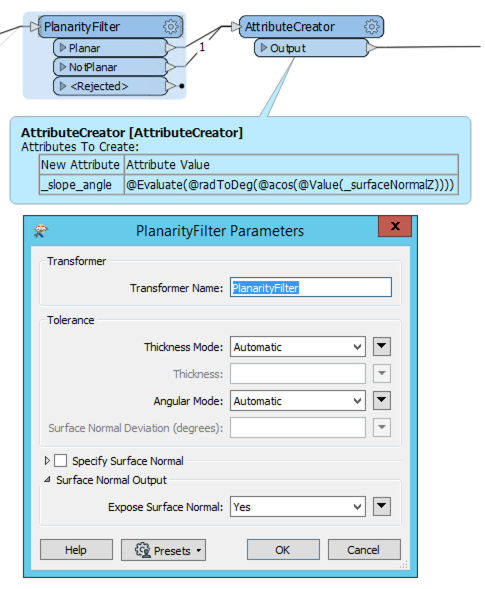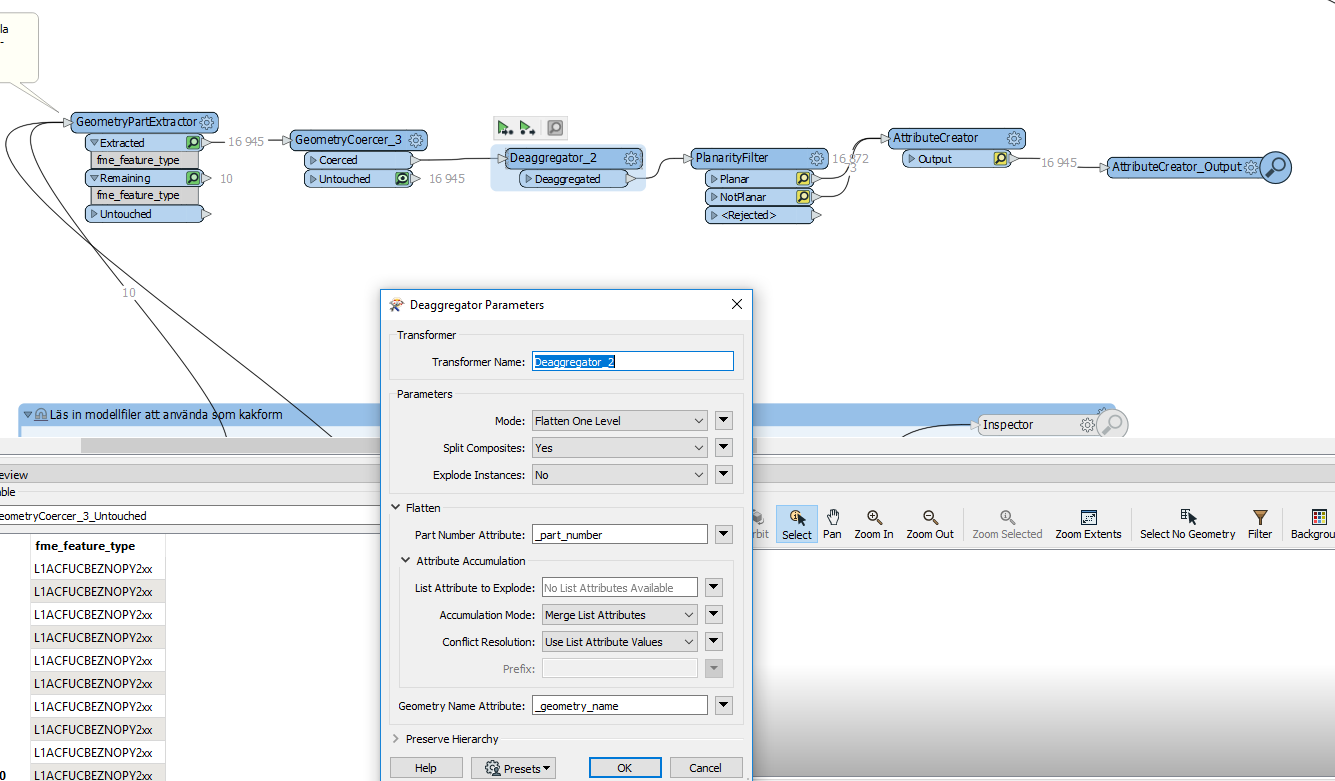Hi, I have:
1. A .dwg file of a single 1 ground surface model that i read in.
2. I use GeometryPartExtractor to extract IFMEMesh and IFMEFaces so I get a trianglor network of the model.
3. I then I use GeometryCoherer to get FME_polygon
How do I get the slope (and possibly aspect) for each individual face? I tried SurfaceModeller and it is not working for me since it is creating extra triangles that I do not want.
I have created a custom tool that calulates FME color based on all incoming attributes, ex a test where I add a step 4 where I use surfaceModeller to create the surface again just to get the slope value then I use a DWGStyler to set the surface color to my calculated color and that works fine.
My problem is that I do not like the surface modeller since I already have my model and the extracted version as it is, and NOW I want to get the slope for each individual Face or Mesh, set the color for each triangle and possible use the aggregator and write to a dwg file again.
I have not found a good solution in the community since they all use SurfaceModeller and I want to keep the dwg attributes and extended settings and whatnot.
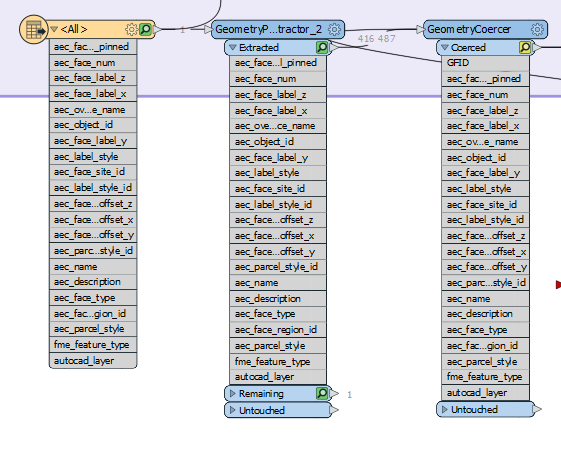
We say a low slope is white, medium is green and too high slope is red, in a gradient, I sucessfully tested the color tool but I do not know how to extract the slope
From this
to this I need the slope
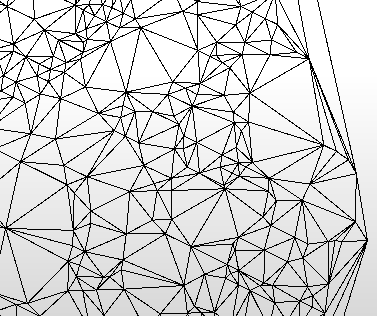
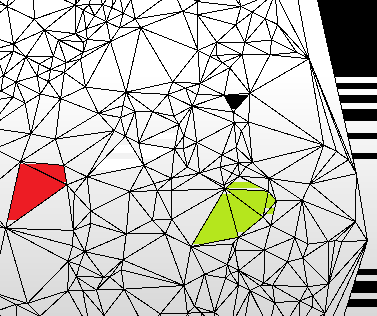
for each polygon wihtout loosing or editing the model




